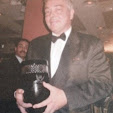FORM VS. CONTENT
When I worked as an adjunct professor of English and Speech at New
York's Fashion Institute of Technology a decade ago, I always used to
end the term with a written debate on form vs. content in media. The
class was divided into two teams, and each student could his or her own
media - film, theatre, print, music, fashion, architecture, design,
fragrance, sex, politics, etc.
There were no right or wrong answers ; the whole point was to help the
students learn how to argue a position.
Conventional wisdom supported content, but the FIT students proved hip
enough to understand the big picture. After all, branding is a
phenomenon that began in the fashion industry. and most of these
students knew how much money is spent every year to create brand
awareness. And some students even knew that Burberry had created a line
of baby clothes to addict the defenseless toddlers to Burberry plaid.
Likewise, these students knew that the fragrance industry spends more on
designing bottles with sex appeal and ads that share the fantasy than it
does on actually developing the contents of the bottle ‚ the fragrance
itself.
Many of my students were East Asian, and East Asian culture has always
valued process as much as actual product. In other words, the way you do
something is just as important as what you actually do. Of course, this
is the diametric opposite of the popular American ideals of winning
is not everything, its the only thing, nice guys finish last, and never
give a sucker an even break ( thank you WC Fields!)
However, there are other American cultures with affinity for these Asian
values. I remember interviewing representatives of 10 different Native
American nations in Stockholm, Sweden, as a correspondent for Rolling
Stone during the first UN Conference on the Human Environment in 1972.
Their message: we are all connected by the air we breathe.
And when I asked David Monangaye, Spiritual Leader of the Hopi
Nation,and the American equivalent of the Dalai Lama, why he had come to
to Stockholm, he answered: To teach the White Man how to live with the
earth..
This was a transformational experience for me, to say the least, and
provided me with both a spiritual modus operandi and a polar star which
has served me ever since.
Now, almost 40 years later, I can look back and say there has been some
progress, There are, of course, a lot of people who are now saying the
world is coming to an end in 2012, but to them I say that I have bene
expecting the world to come to an end in one way or another since the
late sixties, and , lo and behold, we are still here ( at least I think we are!)
And I do believe the words of a German theatrical performer who used to
do a play for children about the history of the world which ended with
him giving the kids seeds and encouraging them to go out and plants
trees. When I asked him what if the world came to an end, he answered,
without missing a beat:No big deal. As long as we do our best in this
lifetime, the world will be better the next time around.‚
So, to all my faithful readers, best wishes for a Happy, Healthy and
Safe 2012 and Year of the Dragon
Blogroll
o Claudia Abate <http://www.postconflictdev.org>
o Fred <http://fredalways.blogspot.com>
o Ian Wiliams <http://www.deadlinepundit.>
o Iara Lee <http://www.caipirinha.com>
o MONUCVIDEO <http://www.YouTube.com/MONUCVIDEO>
o MONUCVIDEO <http://www.facebook.com/MONUCVIDEO>
o MONUSCOVIDEO <http://www.YouTube.com/MONUSCOVIDEO>
o MONUSCOVIDEO <http://www.Facebook.com/MONUSCOVIDEO>
*
>.

No comments:
Post a Comment